Sustainable land management is an approach to managing land resources that balance economic, social, and environmental considerations to meet the needs of present and future generations. It involves adopting practices and technologies that maintain or enhance the productive capacity of land while protecting and improving its natural resources, such as soil, water, and biodiversity.
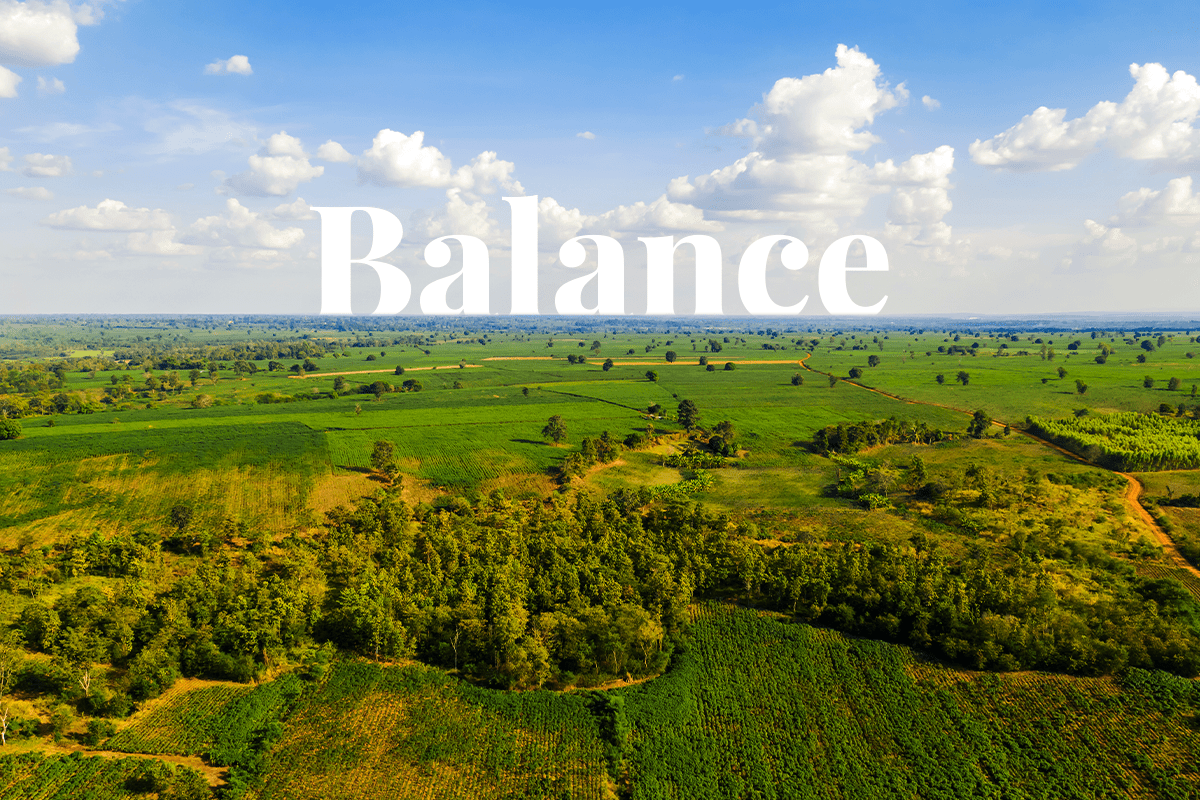 Landscape from aerial view. An environment in the countryside.
Landscape from aerial view. An environment in the countryside.
The concept of sustainable land management is to recognise that land is a finite resource and that its use should not compromise the ability of future generations to use it. The aim is to use land resources to support economic growth, social wellbeing, and environmental sustainability. This requires a holistic approach that considers the relationships between different land uses, such as agriculture, forestry, and urban development and the impact of human activities on the natural environment.
This article will discuss land quality indicators, methods to manage land sustainably, and the benefits and importance of reforestation as it relates to soil quality. We will also review the successful case studies for sustainable land management.
What are land quality indicators?
The biophysical components of sustainable land management are essential to maintain healthy and fertile soil. Core land quality indicators are used to assess and monitor the health and productivity of the land. These indicators are important because they provide valuable information about the state of the environment and help identify areas where management practices can be improved to ensure long-term sustainability.
The core land quality indicators for managed ecosystems, such as agriculture and forestry, in different agro-ecological zones, include:
-
Nutrient balance: This indicator describes nutrient stocks and flows related to different land-management systems farmers use in specific agro-ecological zones and countries. It helps maintain nutrient balance and avoid depletion or pollution of soil nutrients.
-
Yield trends and yield gaps: This indicator describes current yields, yield trends, the ratio of actual to potential yield, and farm-level yields for the major food crops in different countries. It helps identify areas where crop yields can be improved by identifying factors that limit yield potential.
-
Land use intensity: This indicator describes the impacts of agricultural intensification on land quality. Intensification means implementing activities to enhance productivity or profitability per unit of land area. Intensification may involve increased cropping, more value-added production, and increased amounts and frequency of inputs. The emphasis is on farmers' management practices in the transition to intensification.
-
Land use diversity (agro-diversity): This indicator describes the degree of diversification of production systems over the landscape, including livestock and agroforestry systems. It reflects regional farming systems' flexibility, resilience, and capacity to absorb shocks and respond to opportunities.
-
Land cover: This indicator describes the extent, duration, and timing of vegetative cover on land during major erosive periods of the year. Along with land use intensity and diversity, it increases the understanding of desertification issues.
In addition to these indicators, longer-term research is needed to develop indicators related to soil quality, land degradation, and agro-biodiversity. Other core land quality indicators for sustainable land management include water quality, forest land quality, rangeland quality, and land contamination and pollution. These indicators provide invaluable information to measure, improve, and ensure sustainable land practices for the long term.
 Hand of a farmer checking soil health.
Hand of a farmer checking soil health.
Methods for sustainable land management
Several methods of sustainable land management can maintain the health and productivity of land while minimising negative environmental impacts. Here are some of the main methods:
-
Conservation agriculture involves reducing soil disturbance through no-till or reduced tillage practices, promoting soil cover through crop residues and cover crops, and rotating crops. This helps maintain soil health and structure, reduce erosion, and increase water retention.
-
Agroforestry means integrating trees into agricultural landscapes by intercropping or planting trees on the edges of or between fields. Trees can provide shade and windbreaks, increase soil organic matter, and provide additional sources of income through timber and fruit production.
-
Integrated pest management (IPM) uses strategies such as biological control, crop rotation, and chemical controls to manage pests and diseases sustainably. IPM reduces the reliance on synthetic pesticides and promotes biodiversity.
-
Sustainable water management involves conserving water resources, reducing water pollution, and improving irrigation efficiency. This can be achieved through rainwater harvesting, drip irrigation, and contour farming.
-
Sustainable forest practices are a way to manage forests to balance economic, social, and environmental objectives. Sustainable forest management can maintain forests' health and productivity, reduce carbon emissions, and promote biodiversity.
-
Sustainable livestock management involves managing grazing patterns, promoting sustainable feeding practices, and reducing the use of antibiotics and growth hormones. This can reduce soil erosion, improve soil health, and reduce greenhouse gas emissions from livestock.
Read more: 10 Agricultural techniques for water conservation
These are a few general examples of the methods used in sustainable land management. The most effective approach should be holistically created, depending on a region's specific environmental, social, and economic conditions. By implementing sustainable land-management practices, we can ensure that land remains productive and healthy for future generations.
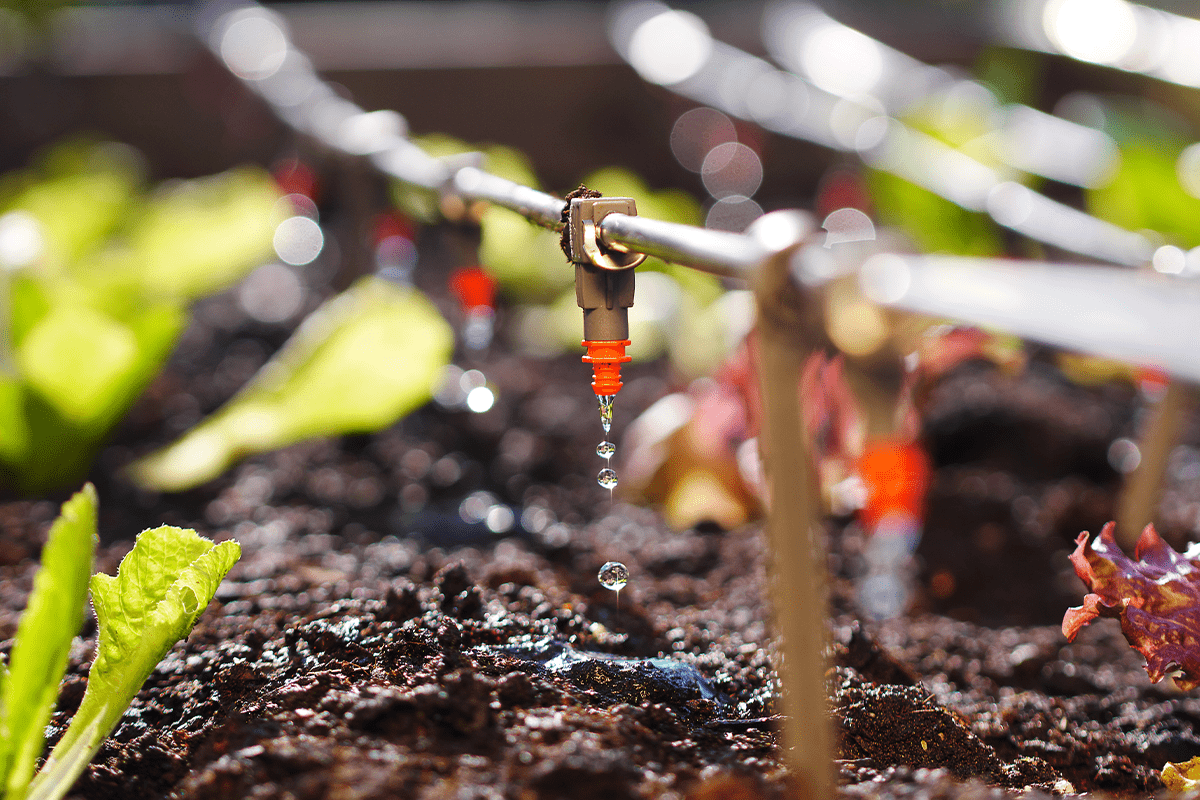 Drip irrigation system.
Drip irrigation system.
Benefits of sustainable land management
Sustainable land management affects agriculture and the global economy, ecosystems, and, most importantly, the communities involved. The interconnected nature of life on earth means that when we properly manage natural resources, including soil, the benefits will be exponentially positive. Let’s discuss some of the benefits:
-
Increased soil quality. Sustainable land-management practices such as conservation tillage, cover cropping, and crop rotation can improve soil health by reducing erosion, increasing organic matter, and enhancing soil structure. These practices increase soil fertility, improve water infiltration, and reduce soil degradation.
-
Increased biodiversity. Agroforestry, mixed cropping, and natural habitat conservation increase biodiversity on agricultural lands. This can enhance pollination, pest control, and soil health, leading to increased productivity and resilience of agricultural systems.
-
Carbon sequestration. Sustainable land management practices, including agroforestry, conservation agriculture, and sustainable forest management, are among the most effective ways to sequester carbon in soil and vegetation and reduce carbon dioxide and other pollution-causing gases.
-
Increased food security. When land is managed with sustainability in mind, it increases food security by improving soil fertility, reducing crop loss due to pests and diseases, and enhancing the resilience of agricultural systems to changing climates and other shocks.
-
Improved livelihoods. Sustainable land-use practices improve rural communities' livelihoods by increasing productivity, reducing poverty, and enhancing resilience to shocks. As a result, local communities enjoy better food security, higher incomes, and improved quality of life.
-
Reduced environmental degradation. When farmers and landowners take proper care of their land via sustainable practices, it reduces soil erosion, prevents deforestation, and conserves natural habitats. It leads to a positive ripple effect in the surrounding ecosystems, improving water quality, reducing air pollution, and enhancing biodiversity.
Read more: Dry farming: growing crops without irrigation
Sustainable land management is vital for achieving various environmental, social, and economic goals. By adopting sustainable land practices, we can improve the health of our ecosystems, enhance our food security, and improve the livelihoods of rural communities while reducing environmental degradation.
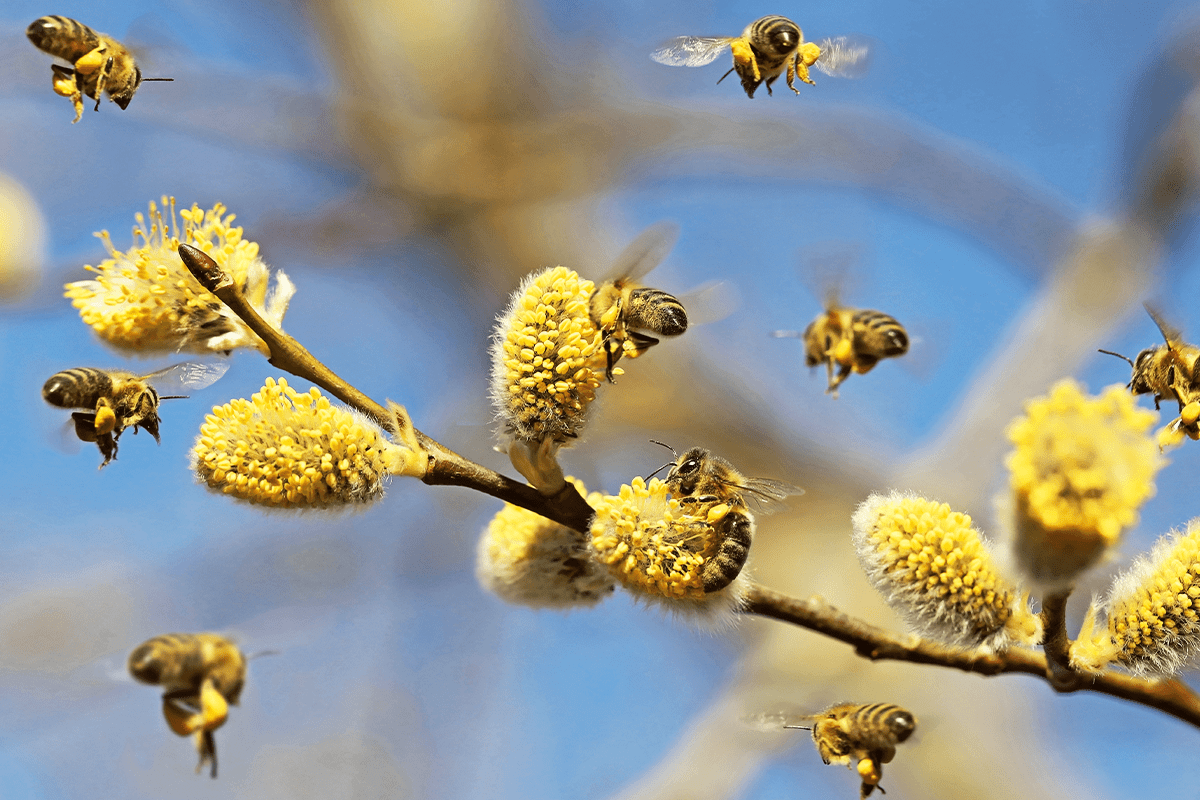 Honey bees collecting pollen on blooming yellow catkins.
Honey bees collecting pollen on blooming yellow catkins.
What role do trees play in sustainable land management?
Trees have a key role in sustainable land management. Agroforestry is planting trees to improve soil quality and sustainably manage land. Reforestation offers a wide range of benefits that contribute to the overall health of the environment and the wellbeing of human communities. So let’s explore the role of trees:
- Trees planted around agricultural areas and waterslides help prevent soil erosion by intercepting rainfall, reducing the impact of water on the soil surface, and stabilising the soil with their roots. They also improve soil quality by adding organic matter and nutrients through leaf litter and decomposing wood.
- Forests are home to a vast array of plant and animal species, many of which are unique and rare. By conserving forests and reforesting the area around them, we protect biodiversity and ensure these species continue to thrive.
- Trees have an irreplaceable role in regulating the water cycle. They absorb water during heavy rainfall and release it slowly, helping maintain a stable flow in rivers and streams. Trees also filter water and improve water quality, reducing the need for expensive treatment facilities.
- Trees provide a range of economic benefits, such as timber and non-timber forest products, ecotourism, and carbon credits. By managing forests sustainably, we can ensure these benefits are realised over the long term.
Start planting trees
Overall, trees are an essential component of sustainable land management. By conserving and managing forests and planting more trees sustainably, we can protect the environment, support local communities, and promote economic development in a way compatible with long-term sustainability.
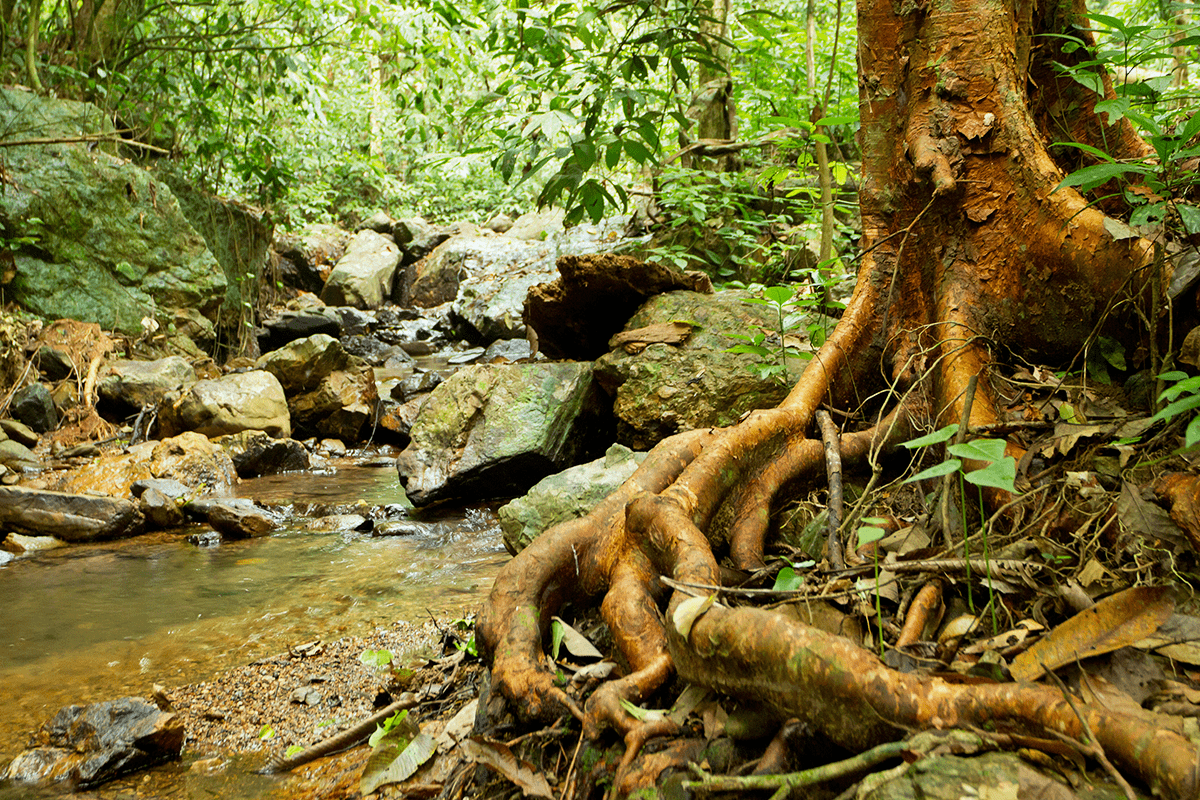 Big tree roots and river in tropical rainforest. Kaeng Krachan National Park, Thailand.
Big tree roots and river in tropical rainforest. Kaeng Krachan National Park, Thailand.
Success stories for sustainable land management
There are many successful examples of sustainable land-management practices around the world. We’ll review a few case studies of how different regions made commitments to improve the quality of their land and achieved their targets.
Farmer-managed natural regeneration in Niger
In the 1950s to 1980s, the destruction of trees and shrubs in the country's agricultural zone exacerbated the impact of recurring drought, strong winds, high temperatures, and pests on crops and livestock, leading to chronic hunger and periodic famine.
In 1984, intense radio coverage of deforestation in the Maradi region, followed by a country-wide drought and famine, shifted the community's mindset towards Farmer Managed Natural Regeneration (FMNR). By protecting and nurturing native trees and shrubs, farmers could regenerate barren land into productive farmland. This process is called farmer-managed natural regeneration (FMNR). It has led to increased crop yields, improved soil quality, and increased incomes for farmers.
Through a food-for-work programme, communities were required to practise FMNR on their farmland, resulting in 500,000 trees being protected. Farmers were surprised that their crops grew better among the trees and benefited from extra wood for home use and sale. Once they experienced the benefits first-hand, more farmers started protecting trees. FMNG became a standard practice, spreading from farmer to farmer, resulting in the re-vegetation of five million hectares of farmland.
Find out how to start a carbon farming project on your land
Terracing in China
The Loess Plateau in China is a region covering an area of approximately 640,000 km². It spans several provinces, including Shaanxi, Gansu, Ningxia, and Inner Mongolia. Over the centuries, the Loess Plateau was home to several ancient Chinese civilisations, including the Xia, Shang, and Zhou dynasties. The region has also experienced significant environmental degradation caused by centuries of unsustainable farming practices, deforestation, and overgrazing. These activities led to severe soil erosion, loss of topsoil, and reduced agricultural productivity.
Read more: Top 10 causes of deforestation
In 1994, the Chinese government started a massive restoration effort to combat the environmental degradation in the Loess Plateau. The programme, known as the Loess Plateau Watershed Rehabilitation Project, involved planting trees, terracing hillsides, and implementing sustainable farming practices. These efforts led to improvements in soil quality, water retention, and biodiversity and helped reduce the impact of droughts and floods in the region.
The restoration effort in the Loess Plateau is considered one of the world's largest and most successful ecological restoration projects. It has become a model for sustainable land-management practices in other regions facing similar environmental challenges.
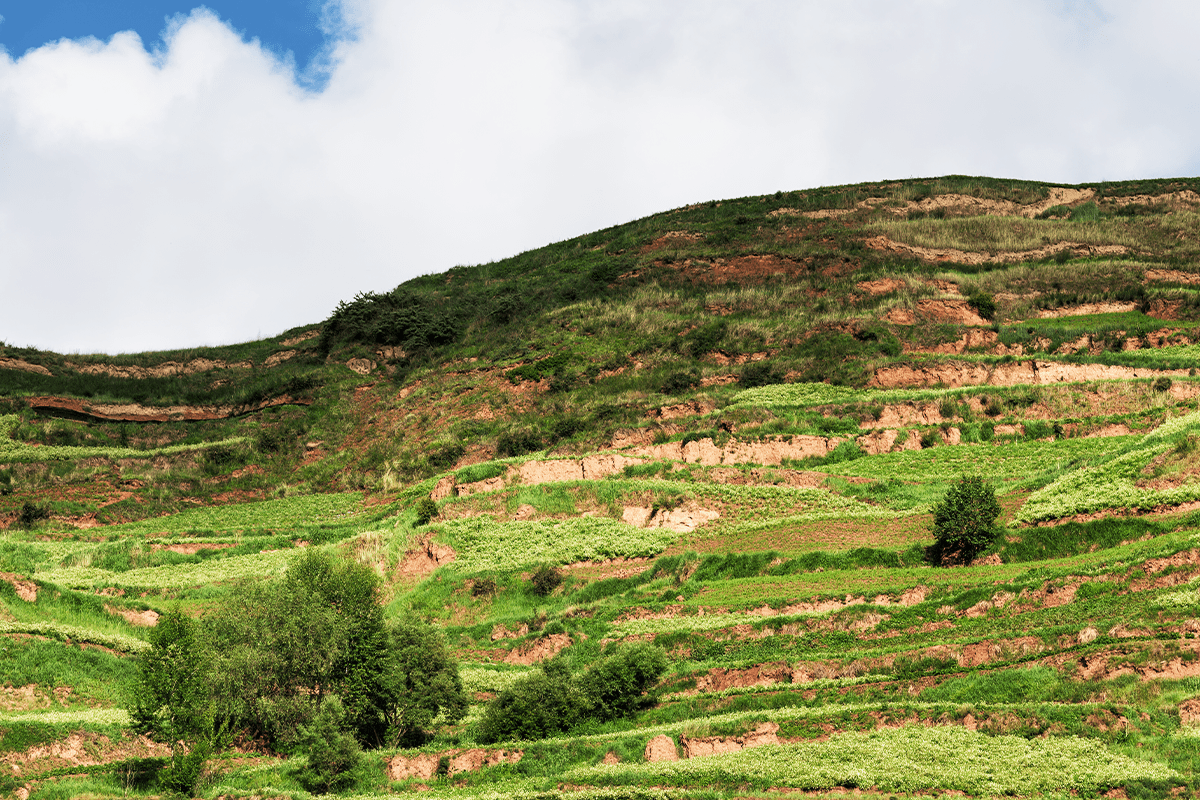 Mountain village scenery in Gansu, China.
Mountain village scenery in Gansu, China.
Sustainable forestry in Costa Rica
Costa Rica is a prominent ecotourism destination, drawing inquisitive travellers from all corners of the world eager to explore its verdant jungles and diverse wildlife. However, during the 1980s, the country was plagued with one of the highest deforestation rates in the world.
In response to this problem, the Payments for Environmental Services (PES) programme was established in 1996 as a financial mechanism to promote forest ecosystem preservation and prevent land degradation. This program is the first of its kind in the region and country. It offers landowners an annual payment of about $60 for every 2.5 acres to conserve four crucial environmental services associated with the forest: water sources, scenic beauty, biodiversity, and carbon capture. Currently, the PES program has enrolled over 680,000 acres and turned Costa Rica into a hub for ecotourism.
Read more: Costa Rica looking to maintain reforestation success
Conservation agriculture in Zambia
In 1995, the Conservation Farming Unit (CFU) was established to promote conservation agriculture practices. The CFU has been working with small-scale farmers nationwide to introduce conservation agriculture practices such as minimum tillage, intercropping, and crop rotation.
This system gained popularity in Zambia as it is viewed as a sustainable method of farming that increases crop yields, preserves soil quality, and reduces chemical use.
Many local farmers were initially sceptical but saw real results once they implemented minimum tillage and crop rotation on their farms. The yields increased significantly, and farmers could produce enough food to feed their families and sell the surplus at the market. They also reported that the soil quality on the farm improved because they started using fewer chemicals than before.
The success of conservation agriculture in Zambia led to the adoption of the system as a national strategy for sustainable agriculture. The government has allocated resources to support adopting conservation agriculture practices among small-scale farmers nationwide.
Read more: Sustainable forestry practices combatting deforestation in Canada
Agroforestry in Kenya
In Kenya, agroforestry practices have been implemented to combat land degradation and deforestation. Agroforestry involves planting trees on farmland to improve soil quality, prevent erosion, and provide additional income by selling timber and other products. This has led to increased food security, improved soil quality, and increased incomes for farmers.
Read more: DGB’s reforestation project in Kenya
The importance of sustainable land management
In conclusion, sustainable land-management practices offer immense benefits that affect all aspects of life on Earth. Therefore, in our global economy, it is essential to holistically choose and use these sustainable practices in different regions in order to secure a healthy and abundant future for generations to come.
However, implementing or supporting these practices may be out of reach for many people living in urban areas. Therefore, at DGB Group, we offer solutions for business owners, investors, and individuals to give back to nature and support a sustainable future for all.







